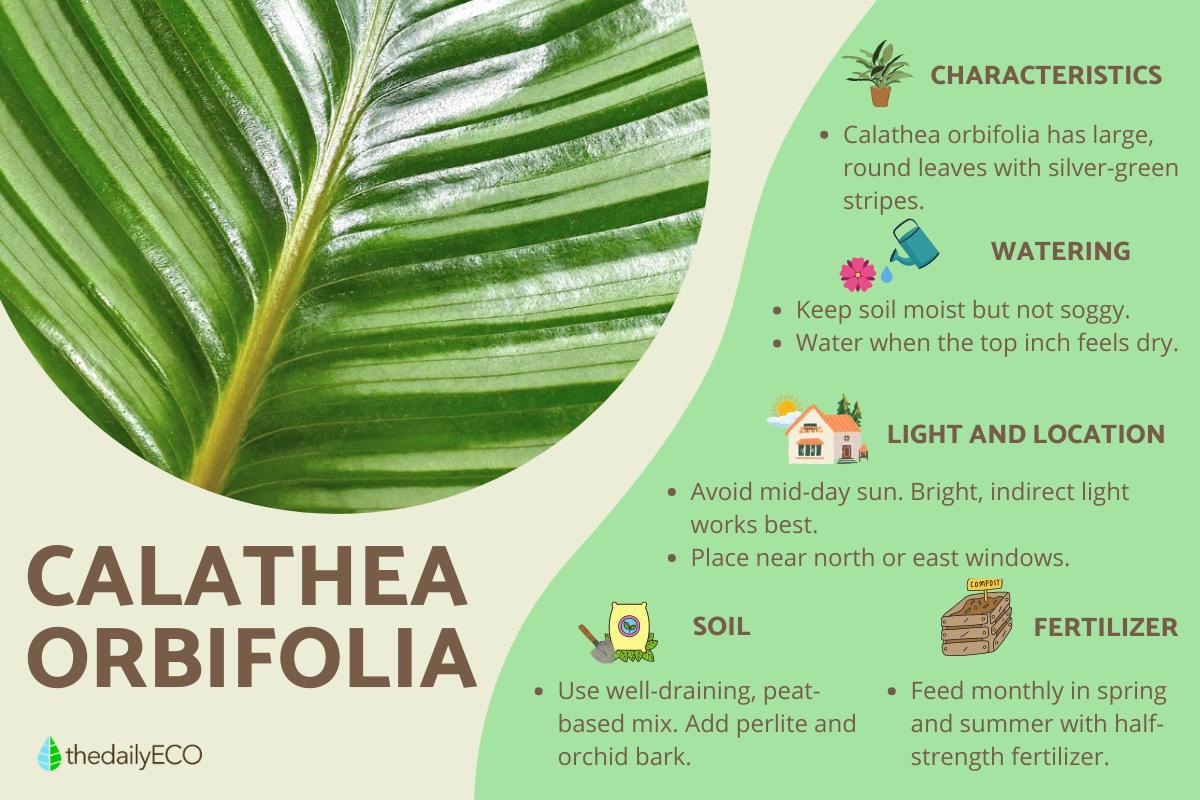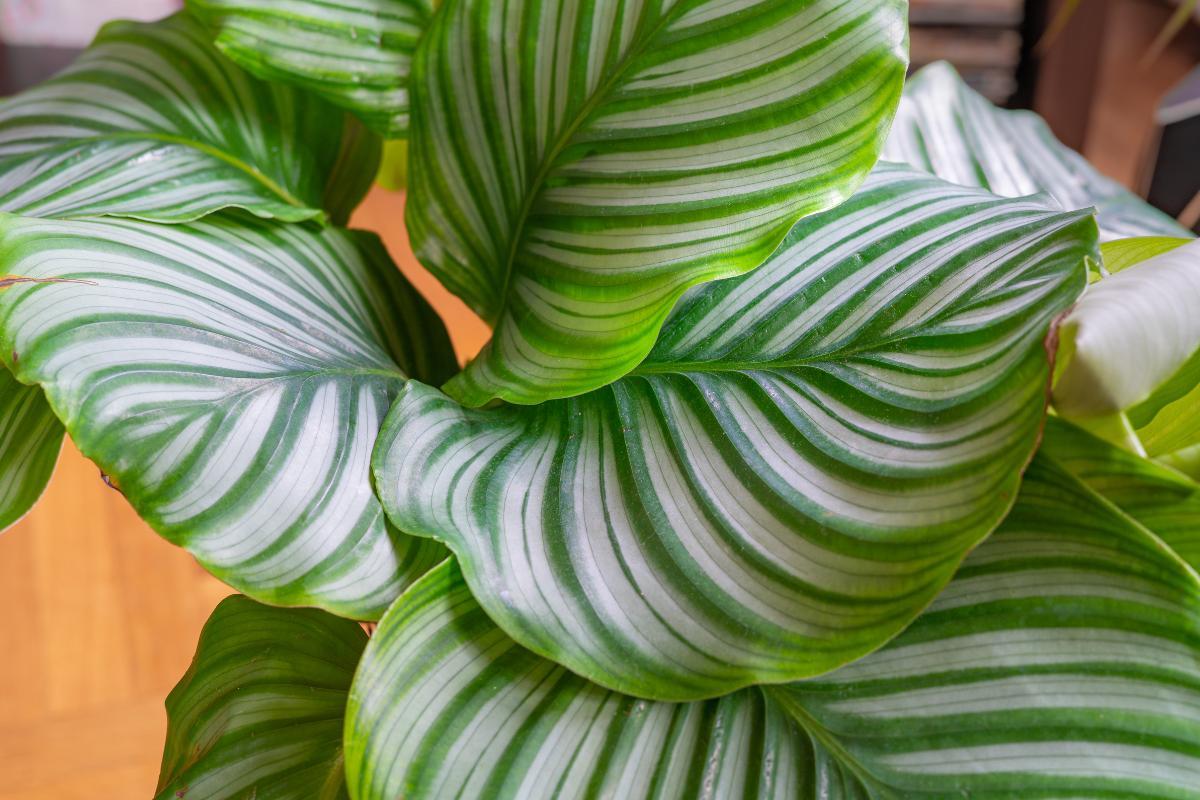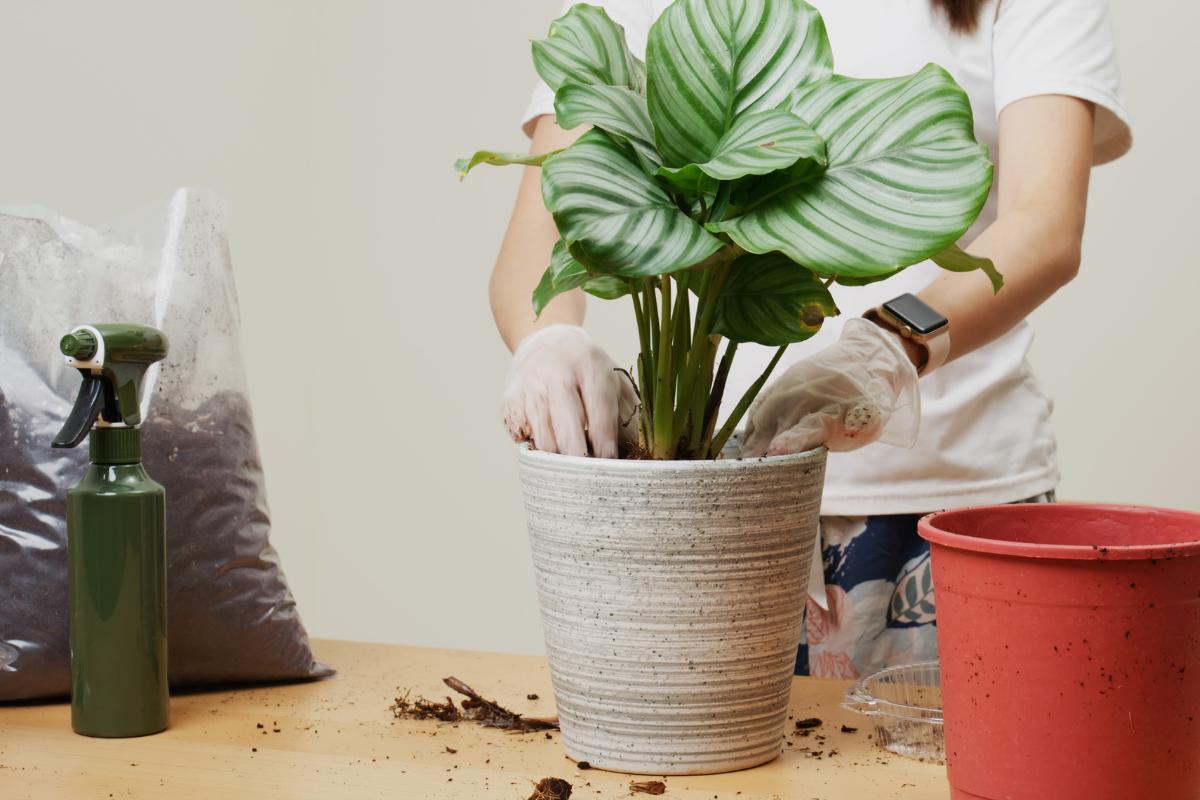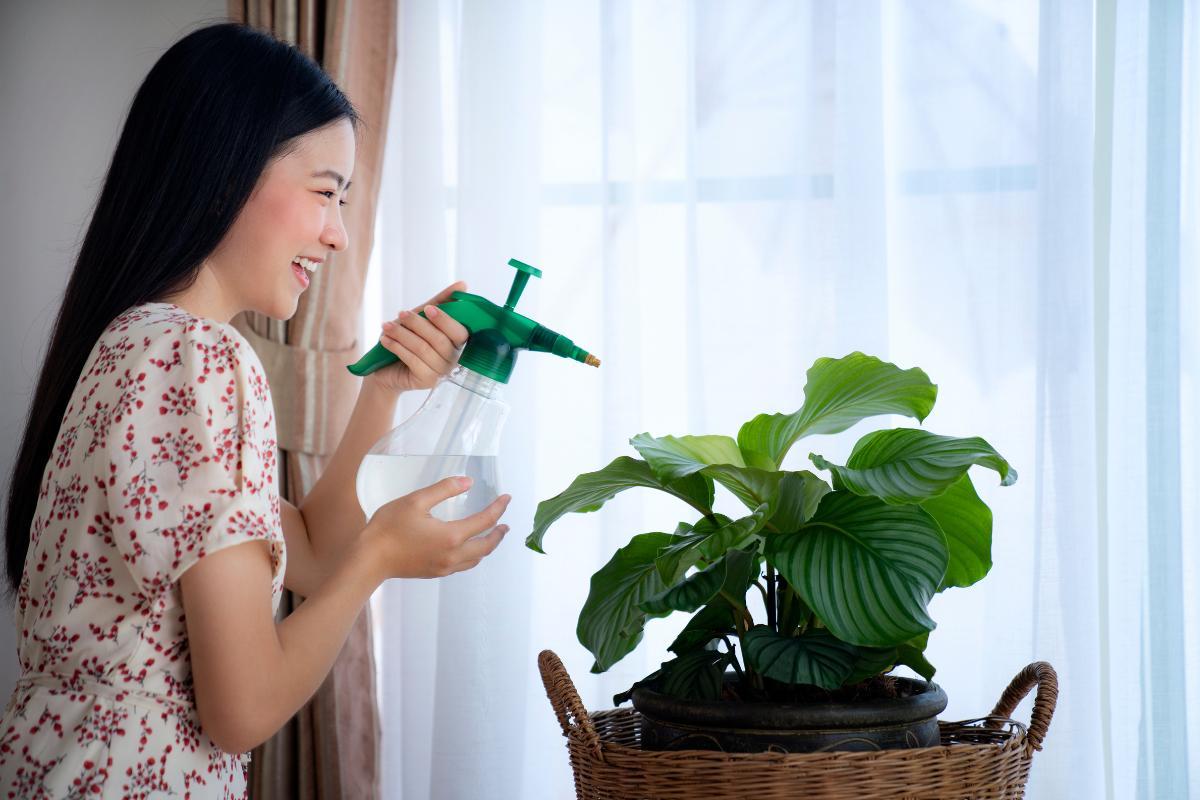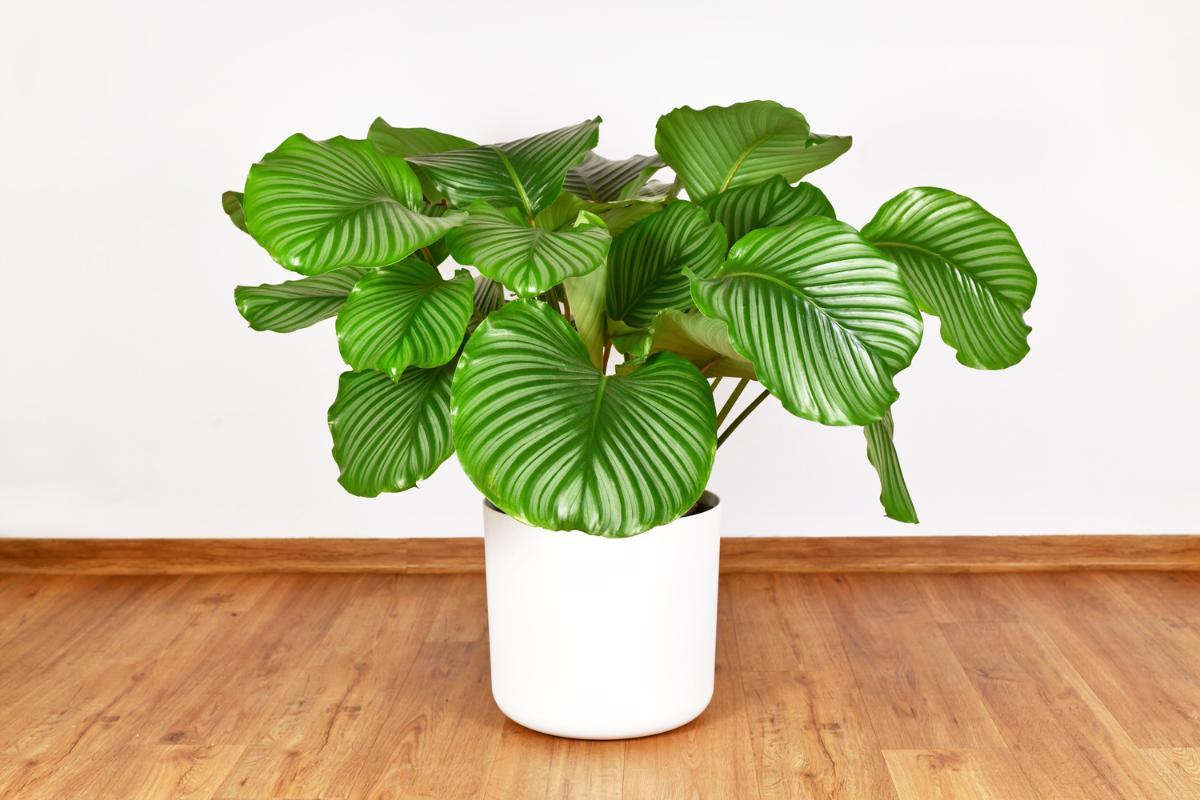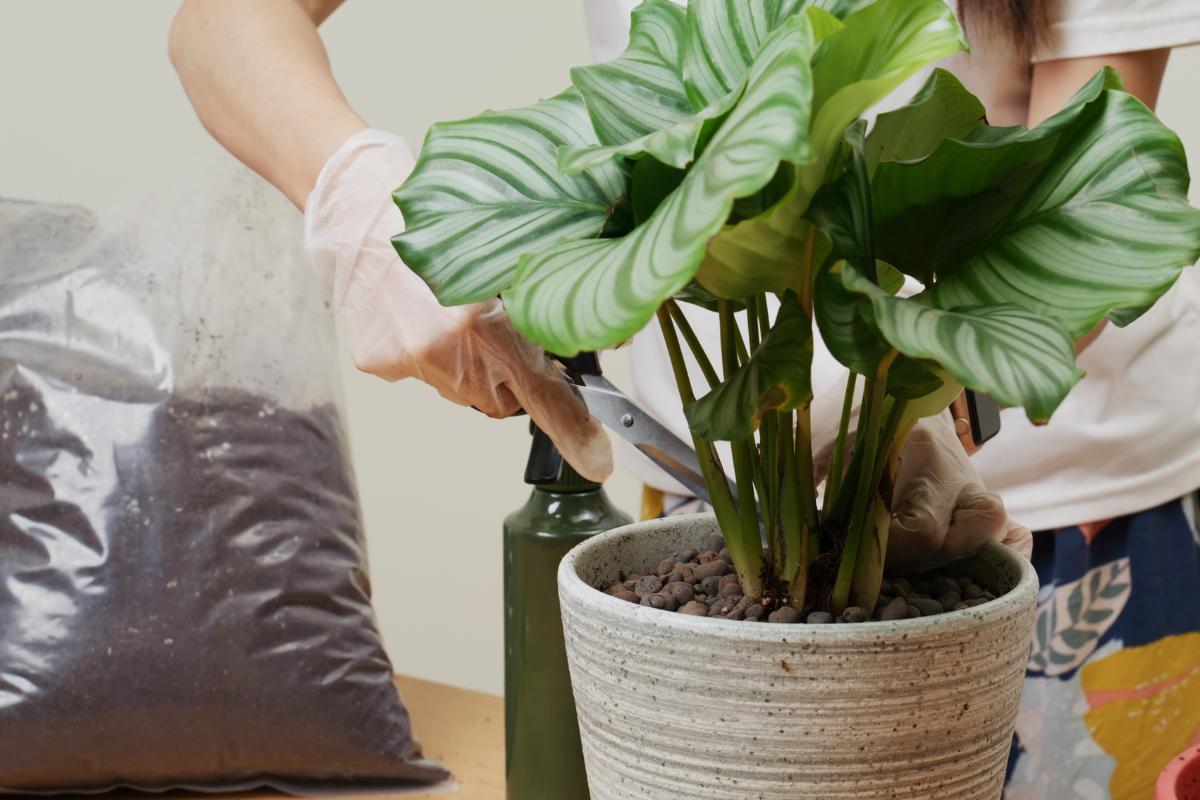How to Care for Calathea Orbifolia


Calathea Orbifolia is a stunning houseplant known for its large, striped foliage and tropical appeal. However, keeping this plant healthy requires proper care, from the right watering routine to correct propagation and transplanting techniques. One common issue plant owners face is brown leaves, which can result from improper care, humidity levels, or watering mistakes.
In this article by thedailyECO, we’ll cover everything you need to know to care for your Calathea Orbifolia, including expert tips on preventing leaf discoloration and maintaining vibrant growth.
- Characteristics of Calathea orbifolia
- Light, Temperature, and Location for Calathea orbifolia
- Substrate for Calathea orbifolia and fertilizer
- Watering for Calathea orbifolia
- Reproduction of Calathea orbifolia
- Calathea orbifolia transplant
- Pruning Calathea orbifolia
- Diseases and pests of Calathea orbifolia
Characteristics of Calathea orbifolia
Goeppertia orbifolia, also known as Calathea orbifolia, is a tropical plant from Bolivia. It used to be in the Calathea group, but now it's in the Goeppertia group. Even though it's been reclassified, people still often call it Calathea orbifolia. Both types of plants belong to the Marantaceae (prayer plant) family.
Here are some of its most distinctive features:
- It's a leafy plant with big, round leaves that have silvery-white stripes on a light green background.
- It can grow to be quite big, reaching about 70-80 centimeters (27.5-31.5 inches) tall and wide.
- The leaves grow from stems that spread out, forming nice clumps.
- It stays green all year round.
- Its leaves fold upwards at night (like other prayer plants). This helps it control moisture and protects it in its natural home.
- It's not too hard to take care of compared to other prayer plants, making it a good choice for beginners.
Now let's look at how to take care of it.
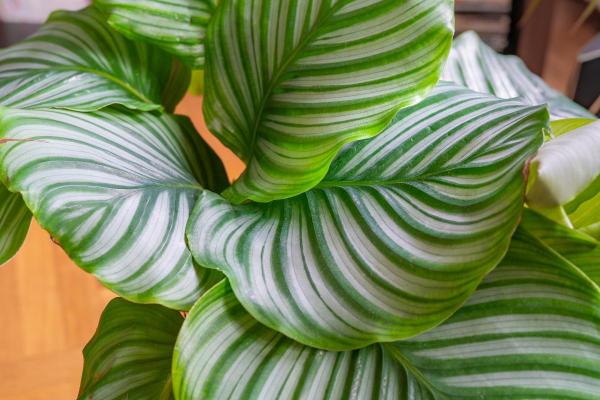
Light, Temperature, and Location for Calathea orbifolia
Goeppertia orbifolia naturally grows under the forest canopy in its tropical home, which gives us clues for how to care for it indoors:
Ideal light:
- Best as an indoor plant that needs bright, indirect light.
- Avoid direct sunlight, which can burn and fade its beautiful striped leaves.
- Works well near east or north-facing windows.
- If near south or west windows, place it a few feet back or use sheer curtains to soften the light.
Temperature:
- Grows best in temperatures between 65-75°F (18-24°C).
- Keep away from drafty areas and sudden temperature changes.
- Avoid placing near heaters, air conditioners, or cold windows in winter.
Location:
- Bathrooms with some natural light are great because of the higher humidity.
- Any room with a stable temperature and some humidity is suitable with proper care.
- Try grouping it with other tropical plants to naturally increase humidity.
Substrate for Calathea orbifolia and fertilizer
Calathea orbifolia needs a well-draining yet moisture-retentive soil to prevent root rot while maintaining adequate hydration. You can easily creaate an ideal mix at home by combining equal parts of sphagnum moss, peat, and worm castings. Add a generous handful of perlites for improved drainage and aeration.
This combination provides excellent moisture retention, good drainage, structural support, and a steady supply of nutrients.
To keep your Calathea orbifolia healthy and promote growth, apply a balanced, diluted liquid fertilizer once a month during the growing season (spring and summer). Alternatively, top-dress with a thin layer of worm castings as a natural slow-release fertilizer that will gradually deliver nutrients to the lower soil layers.
Reduce or eliminate fertilization during fall and winter when growth naturally slows. Always apply fertilizer to damp soil to prevent root burn, and use half the recommended strength on the fertilizer package, as Calatheas can be sensitive to over-fertilization.

Watering for Calathea orbifolia
Calathea orbifolia requires high humidity levels above 50% to thrive. Most homes have significantly lower humidity than the plant's native Brazilian and Bolivian jungle habitats.
To create a more suitable environment, you can regularly mist the leaves with room-temperature water or place the pot on a humidity tray (a saucer filled with pebbles and water). Make sure the pot sits on top of the pebbles above the water line, allowing moisture to evaporate around the plant without waterlogging the roots.
These plants need consistent moisture, but are sensitive to overwatering. Water thoroughly about 2 to 3 times per week during warm seasons, adjusting based on your local climate and home conditions.
Use the moisture level of the substrate as your guide and never allow the soil to dry out more than halfway down the pot, as this causes stress to the plant. Check by inserting your finger into the soil; it should feel consistently moist but never soggy.
During winter months, reduce watering frequency as the plant's growth naturally slows. Keep the surface slightly moist, but not wet. Always use a pot with drainage holes to prevent water from accumulating at the bottom, which can lead to root rot.
The ideal water for Calathea orbifolia is room temperature and free of chemicals. If you use tap water, let it sit overnight to allow chlorine to dissipate before watering your plant.
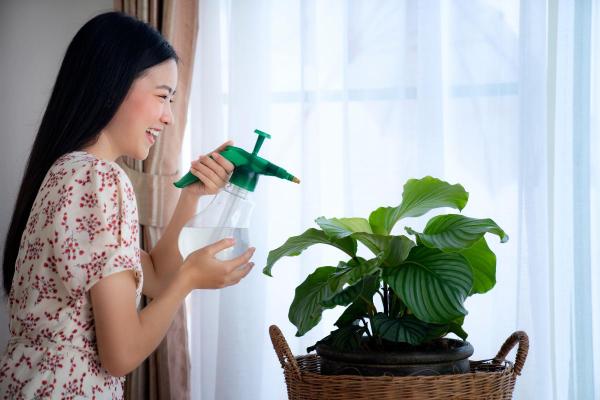
Reproduction of Calathea orbifolia
Calathea orbifolia is most successfully propagated by division, which takes advantage of the plant's natural growth pattern. As the plant matures, it develops multiple stems and leaf clusters from its rhizomatous root system, forming what are often called "pups."
To propagate Calathea orbifolia, wait until the plant has developed several distinct stem groupings. Spring is the ideal time for division as the plant is entering its active growth phase. Here's how to successfully divide your plant:
- Carefully remove the entire plant from its pot, gently loosening the soil around the roots. Identify natural separation points between stem groupings.
- Using clean, disinfected pruning shears or a sharp knife, divide the plant into two or more sections. Ensure each division has both healthy leaves and an adequate root system attached.
- Plant each division in a fresh pot with the well-draining substrate mix described earlier (sphagnum moss, peat, worm castings, and perlite).
- Water thoroughly after planting to help the divisions establish. Keep the soil consistently moist and provide higher humidity during the first few weeks to reduce transplant shock.
- Place the newly potted divisions in a location with bright indirect light but no direct sun to minimize stress while they establish.
The new plants should show signs of recovery and fresh growth within a few weeks. Love your Calathea orbifolia? Discover its stunning relatives in our illustrated guide to the Calathea family.

Calathea orbifolia transplant
# Calathea orbifolia Transplanting
Calathea orbifolia is sensitive to transplanting, so only repot when absolutely necessary. These plants experience significant stress during the process, which can lead to leaf damage or temporary growth setbacks.
Only transplant your Calathea orbifolia when:
- You've recently divided the plant
- The current pot has become too small (roots emerging from drainage holes)
- The soil has become waterlogged or appears to contain pathogens
When transplanting is necessary, follow these guidelines for success:
Prepare the new pot with fresh substrate before removing the plant from its current container. Work quickly but gently to minimize the time roots are exposed to air. Wearing gloves protects both you and the plant during handling.
Carefully remove the plant from its pot, supporting the root ball with your hand to keep it intact. If the roots are circling the pot (root bound), gently loosen them before replanting. Place the plant at the same depth in the new pot as it was previously growing.
After transplanting, water thoroughly and maintain slightly higher humidity for a couple of weeks to help the plant recover. Avoid fertilizing for at least a month after repotting to prevent additional stress.
The best time to transplant Calathea orbifolia is during spring when the plant is entering its active growth phase and can recover more quickly.
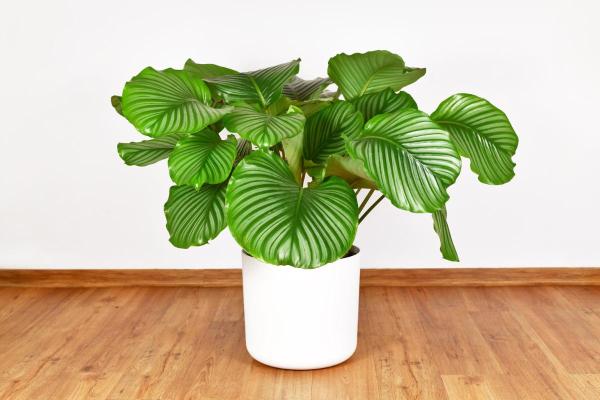
Pruning Calathea orbifolia
Calathea orbifolia doesn't require extensive pruning, but some occasional maintenance helps keep the plant healthy and attractive. The main reasons to prune this plant are to remove damaged or diseased foliage and to control its size and shape.
When pruning your Calathea orbifolia, focus on removing any yellow, brown, or damaged leaves by cutting them at the base of the stem. This not only improves the plant's appearance but also prevents the spread of potential diseases and redirects energy to healthy growth.
If your plant has become too large for its space, you can selectively prune some of the outer stems to reduce its size. However, avoid removing more than one-third of the plant's foliage at once, as this could cause unnecessary stress.
Always use clean, sharp pruning shears for a clean cut that heals quickly. Disinfect your tools before and after use with rubbing alcohol or a diluted bleach solution to prevent disease transmission between plants. Wearing gloves protects both your hands and the plant during the pruning process.
The best time to prune Calathea orbifolia is during its active growing season (spring and summer) when it can recover more quickly from the pruning stress.
Love the striking leaf patterns of your Calathea orbifolia? Discover more plants with eye-catching foliage in our visual guide to vibrant houseplants.
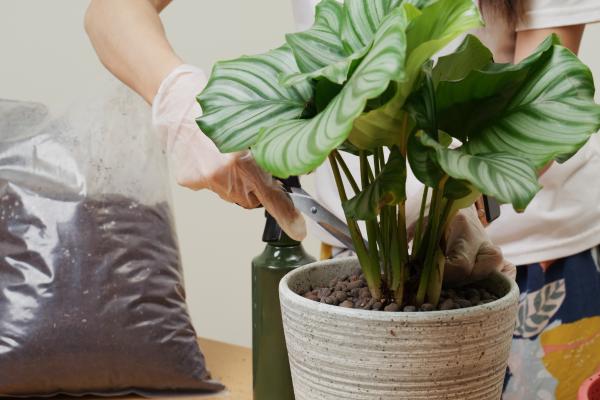
Diseases and pests of Calathea orbifolia
Brown leaf tips:
Brown tips on Calathea orbifolia leaves typically indicate sensitivity to water quality. Tap water often contains fluoride, chlorine, and minerals that can damage these sensitive plants. Use distilled water, filtered water, or collected rainwater that isn't acidic.
Brown edges can also appear when the plant receives too much direct sunlight or when humidity levels are too low. If you notice browning tips, check your plant's location and move it to a spot with less direct light if necessary.
Yellow leaves:
Yellowing leaves on Calathea orbifolia usually signal overwatering. Despite their moisture needs, these plants don't tolerate waterlogged soil. Reduce watering frequency and ensure proper drainage to resolve this issue. Yellow leaves can also develop when the plant receives excessive light.
In bright locations, the leaves may turn yellow as a sign of light stress. Move your plant to a location with bright but indirect light to prevent further yellowing. Is your beautiful Calathea showing signs of stress with yellowing leaves? Our diagnostic guide helps you pinpoint and fix the problem fast.
Fungal issues:
Black spots on leaves often indicate fungal problems caused by persistently wet conditions. If you notice fungal growth, remove affected leaves with clean scissors and improve air circulation around the plant. Reduce watering and avoid misting the leaves until the condition improves.
Unlike some recommendations, don't place the plant in direct sun as this can cause additional stress. Instead, focus on improving ventilation and letting the soil dry slightly between waterings.
Spider mites:
These tiny pests appear as reddish specks on the undersides of leaves, especially when humidity is low. They thrive in dry conditions, which is why maintaining proper humidity is essential for prevention. If your Calathea orbifolia develops spider mites, wipe the leaves with a damp cloth, increase humidity around the plant, and if necessary, treat with insecticidal soap or neem oil, focusing on the undersides of leaves where mites typically cluster.
If you want to read similar articles to How to Care for Calathea Orbifolia, we recommend you visit our Plant care and cultivation category.
- De La Paz, R. (2021). Houseplants for Beginners: A Practical Guide to Choosing, Growing, and Helping Your Plants Thrive. United States: Sourcebooks.





